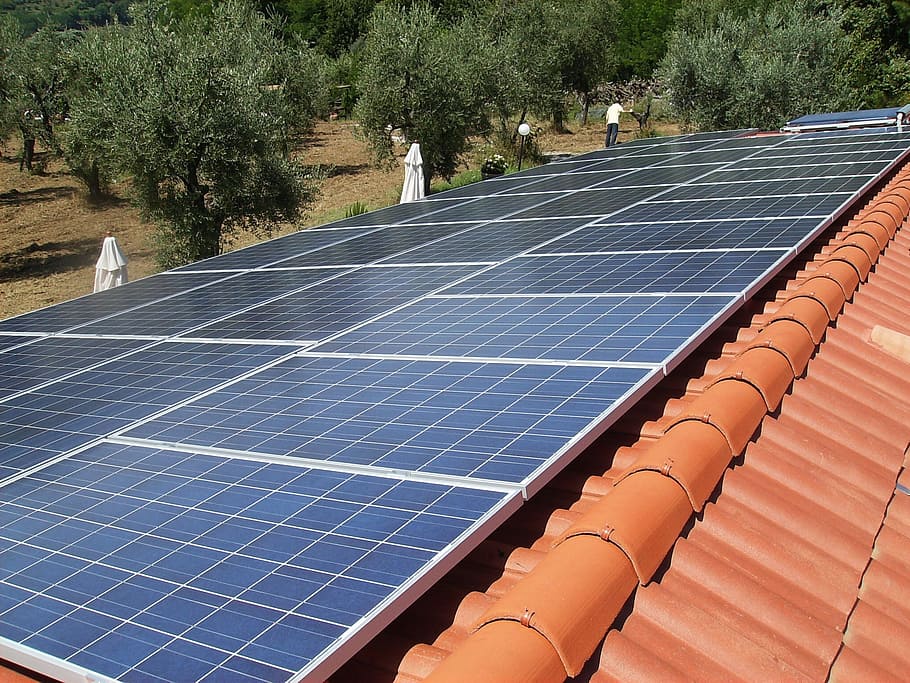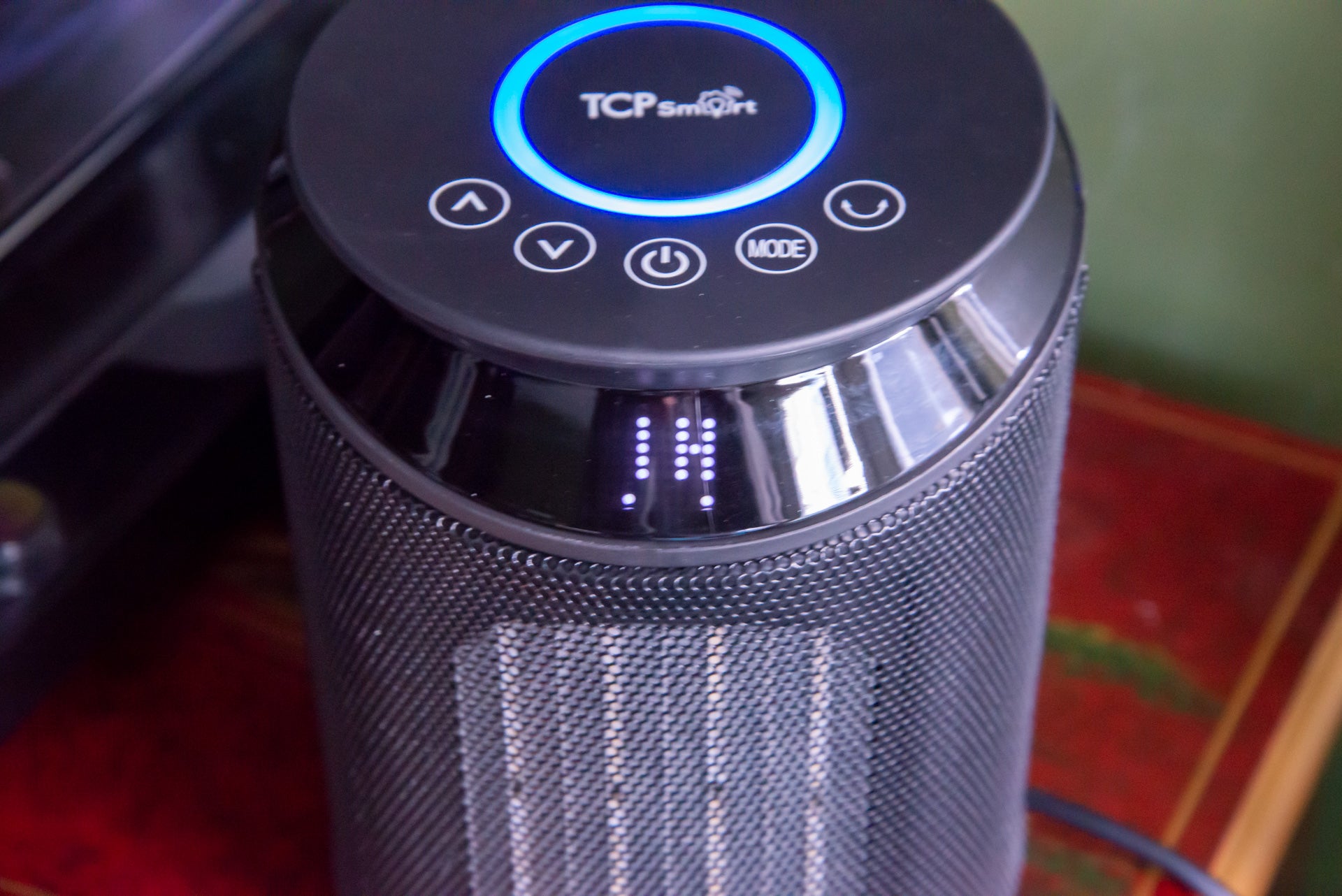After reading this blog please feel free to call All Around Heating And Air in Long Beach Ca, for any questions or concerns pertaining to your air conditioning and heating system Active solar heating systems use solar energy to heat a fluid — either liquid or air — and then transfer the solar heat directly to the interior space or to a storage system for later use. If the solar system cannot provide adequate space heating, an auxiliary or backup system provides the additional heat. Liquid systems are more often used when storage is included and are well suited for radiant heating, boilers with hot water radiators, and even absorption heat pumps and coolers. Both liquid and air systems can supplement forced air systems.
LIQUID-BASED ACTIVE SOLAR HEATING SYSTEM
Solar liquid collectors are most appropriate for central heating which are used in active solar heating system. Liquid-based active solar heating systems are the same as those used in solar domestic water heating systems. Flat-plate collectors are the most common, but evacuated tube and concentrating collectors are also available. In the collector, a heat transfer or “working” fluid such as water, antifreeze (usually non-toxic propylene glycol), or other types of liquid absorbs the solar heat. At the appropriate time, a controller operates a circulating pump to move the fluid through the collector.
The liquid flows rapidly, so its temperature only increases 10° to 20°F (5.6° to 11°C ) as it moves through the collector. Heating a smaller volume of liquid to a higher temperature increases heat loss from the collector and decreases the efficiency of the system. The liquid flows to either a storage tank or a heat exchanger for immediate use. Other system components include piping, pumps, valves, an expansion tank, a heat exchanger, a storage tank, and controls.
The flow rate depends on the heat transfer fluid. To learn more about types of liquid solar collectors, their sizing, and maintenance,

STORING HEAT IN LIQUID SYSTEMS
Liquid systems used in active solar heating systems store solar heat in tanks of water or in the masonry mass of a radiant slab system. In tank-type storage systems, heat from the working fluid transfers to a distribution fluid in a heat exchanger exterior to or within the tank.
Tanks are pressurized or unpressurized, depending on the overall system design. Before choosing a storage tank, consider cost, size, durability, where to place it (in the basement or outside), and how to install it. You may need to construct a tank on-site if a tank of the necessary size will not fit through existing doorways. Tanks also have limits for temperature and pressure and must meet local building, plumbing, and mechanical codes. You should also note how much insulation is necessary to prevent excessive heat loss, and what kind of protective coating or sealing is necessary to avoid corrosion or leaks.
Specialty or custom tanks may be necessary for systems with very large storage requirements. They are usually stainless steel, fiberglass, or high-temperature plastic. Concrete and wood (hot tub) tanks are also options. Each type of tank has its advantages and disadvantages, and all types require careful placement because of their size and weight. It may be more practical to use several smaller tanks rather than one large one. The simplest storage system option is to use standard domestic water heaters. They meet building codes for pressure vessel requirements, are lined to inhibit corrosion, and are easy to install.
DISTRIBUTING HEAT FOR LIQUID SYSTEMS
You can use a radiant floor, hot water baseboards or radiators, or a central forced-air system to distribute the solar heat in the active solar heating system. In a radiant floor system, solar-heated liquid circulates through pipes embedded in a thin concrete slab floor, which then radiates heat to the room. Radiant floor heating is ideal for liquid solar systems because it performs well at relatively low temperatures. A carefully designed system may not need a separate heat storage tank, although most systems include one for temperature control. A conventional boiler or even a standard domestic water heater can supply backup heat. The slab is typically finished with tile. Radiant slab systems take longer to heat the home from a “cold start” than other types of heat distribution systems. Once they are operating, however, they provide a consistent level of heat. Carpeting and rugs will reduce the system’s effectiveness.
Hot-water baseboards and radiators require water between 160° and 180°F (71° and 82°C) to effectively heat a room. Generally, flat-plate liquid collectors heat the transfer and distribution fluids to between 90° and 120°F (32° and 49°C). Therefore, using baseboards or radiators with a solar heating system requires that the surface area of the baseboard or radiators be larger, the temperature of the solar-heated liquid be increased by the backup system, or a medium-temperature solar collector (such as an evacuated tube collector) be substituted for a flat-plate collector.
There are several options for incorporating a liquid system into a forced-air heating system. The basic design is to place a liquid-to-air heat exchanger, or heating coil, in the main room-air return duct before it reaches the furnace. Air returning from the living space is heated as it passes over the solar-heated liquid in the heat exchanger. Additional heat is supplied as necessary by the furnace. The coil must be large enough to transfer sufficient heat to the air at the lowest operating temperature of the collector.
VENTILATION PREHEATING
Solar air heating systems use air as the working fluid for absorbing and transferring solar energy. Solar air collectors can directly heat individual rooms or can potentially pre-heat the air passing into a heat recovery ventilator or through the air coil of an air-source heat pump.
Air collectors produce heat earlier and later in the day than liquid systems, so they may produce more usable energy over a heating season than a liquid system of the same size. Also, unlike liquid systems, air systems do not freeze, and minor leaks in the collector or distribution ducts will not cause significant problems, although they will degrade performance. However, the air is a less efficient heat transfer medium than liquid, so solar air collectors operate at lower efficiencies than solar liquid collectors.
Although some early systems passed solar-heated air through a bed of rocks as energy storage, this approach is not recommended because of the inefficiencies involved, the potential problems with condensation and mold in the rock bed, and the effects of that moisture and mold on indoor air quality.
Solar air collectors are often integrated into walls or roofs to hide their appearance. For instance, a tile roof could have air flow paths built into it to make use of the heat absorbed by the tiles.
Most solar air heating systems are room air heaters, but relatively new devices called transpired air collectors have limited applications in homes.
ROOM AIR HEATERS
Air collectors can be installed on a roof or an exterior (south-facing) wall for heating one or more rooms. Although factory-built collectors for on-site installation are available, do-it-yourselfers may choose to build and install their own air collectors. A simple window air heater collector can be made for a few hundred dollars.
The collector has an airtight and insulated metal frame and a black metal plate for absorbing heat with glazing in front of it. Solar radiation heats the plate which, in turn, heats the air in the collector. An electric fan or blower pulls air from the room through the collector and blows it back into the room. Roof-mounted collectors require ducts to carry air between the room and the collector. Wall-mounted collectors are placed directly on a south-facing wall, and holes are cut through the wall for the collector air inlet and outlets.
Simple “window box collectors” fit in an existing window opening. They can be active (using a fan) or passive. In passive types, air enters the bottom of the collector, rises as it is heated, and enters the room. A baffle or damper keeps the room air from flowing back into the panel (reverse thermosiphon) when the sun is not shining. These systems only provide a small amount of heat, because the collector area is relatively small.

TRANSPIRED AIR COLLECTORS
Transpired air collectors use a simple technology to capture the sun’s heat to warm buildings. The collectors consist of dark, perforated metal plates installed over a building’s south-facing wall. An air space is created between the old wall and the new facade. The dark outer facade absorbs solar energy and rapidly heats up on sunny days—even when the outside air is cold.
A fan or blower draws ventilation air into the building through tiny holes in the collectors and up through the air space between the collectors and the south wall. The solar energy absorbed by the collectors warms the air flowing through them by as much as 40°F. Unlike other space heating technologies, transpired air collectors require no expensive glazing.
Transpired air collectors are most suitable for large buildings with high ventilation loads, a fact which makes them generally unsuitable for today’s tightly sealed homes. However, small transpired air collectors could be used to pre-heat the air passing into a heat recovery ventilator or could warm the air coil on an air source heat pump, improving its efficiency and comfort level on cold days. No information is currently available on the cost-effectiveness of using a transpired air collector in this way, however.
ECONOMICS AND OTHER BENEFITS OF ACTIVE SOLAR HEATING SYSTEMS
Active solar heating systems are most cost-effective in cold climates with good solar resources when they are displacing the more expensive heating fuels, such as electricity, propane, and oil. Some states offer sales tax exemptions, income tax credits or deductions, and property tax exemptions or deductions for solar energy systems.
The cost of an active solar heating system will vary. Commercially available collectors come with warranties of 10 years or more, and should easily last decades longer. The economics of an active space heating system improve if it also heats domestic water because an otherwise idle collector can heat water in the summer.
Heating your home with an active solar energy system can significantly reduce your fuel bills in the winter. A solar heating system will also reduce the amount of air pollution and greenhouse gases that result from your use of fossil fuels for heating or generating electricity.
SELECTING AND SIZING A SOLAR HEATING SYSTEM
Selecting the appropriate solar energy system(active solar heating system) depends on factors such as the site, design, and heating needs of your house. Local covenants may restrict your options; for example, homeowner associations may not allow you to install solar collectors on certain parts of your house (although many homeowners have been successful in challenging such covenants).
The local climate, the type and efficiency of the collector(s), and the collector area determine how much heat a solar heating system can provide. It is usually most economical to design an active system to provide 40% to 80% of the home’s heating needs. Systems providing less than 40% of a home’s heat are rarely cost-effective except when using solar air heater collectors that heat one or two rooms and require no heat storage. A well-designed and insulated home that incorporates passive solar heating techniques will require a smaller and less costly heating system of any type and may need very little supplemental heat other than solar.
Besides the fact that designing an active system to supply enough heat 100% of the time is generally not practical or cost-effective, most building codes and mortgage lenders require a backup heating system. Supplementary or backup systems supply heat when the solar system cannot meet heating requirements. Backups can range from a wood stove to a conventional central heating system.
CONTROLS FOR SOLAR HEATING SYSTEMS
Controls for active solar heating systems are usually more complex than those of a conventional heating system because they have to analyze more signals and control more devices (including the conventional backup heating system). Solar controls use sensors, switches, and/or motors to operate the system. The system uses other controls to prevent freezing or extremely high temperatures in the collectors.
The heart of the control system is a differential thermostat, which measures the difference in temperature between the collectors and storage unit. When the collectors are 10° to 20°F (5.6° to 11°C) warmer than the storage unit, the thermostat turns on a pump or fan to circulate water or air through the collector to heat the storage medium or the house.
The operation, performance, and cost of these controls vary. Some control systems monitor the temperature in different parts of the system to help determine how it is operating. The most sophisticated systems use microprocessors to control and optimize heat transfer and delivery to the storage and zones of the house.
It is possible to use a solar panel to power low-voltage, direct current (DC) blowers (for air collectors) or pumps (for liquid collectors). The output of the solar panels matches the available solar heat gain to the solar collector. With careful sizing, the blower or pump speed is optimized for efficient solar gain to the working fluid. During low sun conditions, the blower or pump speed is slow, and during high solar gain, it runs faster.
When used with a room air collector, separate controls may not be necessary. This also ensures that the system will operate in the event of a utility power outage. A solar power system with battery storage can also provide power to operate a central heating system, though this is expensive for large systems.
BUILDING CODES, COVENANTS, AND REGULATIONS FOR SOLAR HEATING SYSTEMS
Before installing a solar energy system, you should investigate local building codes, zoning ordinances, and subdivision covenants, as well as any special regulations pertaining to the site. You will probably need a building permit to install a solar energy system on an existing building.
Not every community or municipality initially welcomes residential renewable energy installations. Although this is often due to ignorance or the comparative novelty of renewable energy systems, you must comply with existing building and permit procedures to install your system.
The matter of building code and zoning compliance for a solar system installation is typically a local issue. Even if a statewide building code is in effect, your city, county, or parish usually enforces it. Common problems homeowners have encountered with building codes include the following:
- Exceeding roof load
- Unacceptable heat exchangers
- Improper wiring
- Unlawful tampering with potable water supplies.
Potential zoning issues include these:
- Obstructing side yards
- Erecting unlawful protrusions on roofs
- Siting the system too close to streets or lot boundaries.
Special area regulations—such as local community, subdivision, or homeowner’s association covenants—also require compliance. These covenants, historic district regulations, and flood-plain provisions can easily be overlooked. To find out what’s needed for local compliance, contact your local jurisdiction’s zoning and building enforcement divisions and any appropriate homeowner, subdivision, neighborhood, and/or community association(s).
INSTALLING AND MAINTAINING YOUR SOLAR HEATING SYSTEM
How well an active solar energy system performs depends on effective siting, system design, and installation as well as the quality and durability of the components. Today’s collectors and controls are high quality, but it can still be a challenge finding an experienced contractor who can properly design and install the system.
Once a system is in place, it has to be properly maintained to optimize its performance and avoid breakdowns. Different systems require different types of maintenance, and you should set up a calendar listing the maintenance tasks that the component manufacturers and installer recommends for your installation.
Most solar water heaters are automatically covered under your homeowner’s insurance policy. However, damage from freezing is generally not. Contact your insurance provider to find out what its policy is. Even if your provider will cover your system, it is best to inform them in writing that you own a new system.
Call All Around Heating And Air in Long Beach, Ca. for all your heating and air conditioning needs. www.allaroundheatingandair.com


